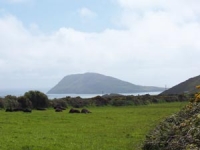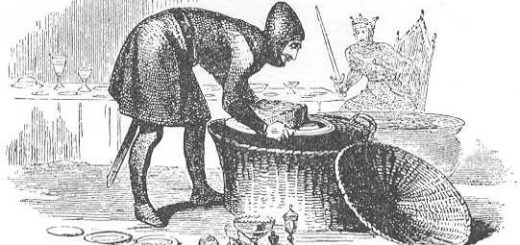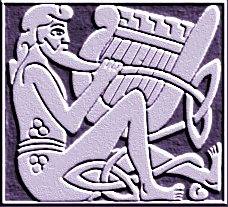Ruthin Castle
Before I begin I would like to say that I spent my honeymoon at Ruthin Castle, and found the accommodation and service exemplary. I would recommend staying in the castle to anybody, and I cannot overstate how much I enjoyed the Medieval Banquet which they host on a regular basis. We were recently contacted by a guest of the castle who had stayed there and was willing to share her experience with us. I hope that other visitors will let us know if they encounter the Grey Lady, as she is a fascinating occupant of a fantastic place and I would like to help piece her story together.
 The castle is reputed to be haunted by a ‘Grey Lady’ who is seen roaming the exterior of the castle, the battlements, the old Chapel and the Medieval Banqueting Hall. The lady is said to be a murderess and the wife of the castle’s second in command, when it was occupied by Reginald de Grey, appointed by Edward I. According to the legend her husband had an affair, and she murdered her love rival with an axe. She was executed for her crime and buried in the area around the battlements, as no local clergymen would allow her to be buried on consecrated ground. Her grave can still be seen today.
The castle is reputed to be haunted by a ‘Grey Lady’ who is seen roaming the exterior of the castle, the battlements, the old Chapel and the Medieval Banqueting Hall. The lady is said to be a murderess and the wife of the castle’s second in command, when it was occupied by Reginald de Grey, appointed by Edward I. According to the legend her husband had an affair, and she murdered her love rival with an axe. She was executed for her crime and buried in the area around the battlements, as no local clergymen would allow her to be buried on consecrated ground. Her grave can still be seen today.
 The construction of the castle started around 1277, under the orders of Edward the I, who was notable for waging wars in both Wales and Scotland. The castle would have been a strategic advantage to quell uprising in Wales, and originally consisted of five round towers, of which only three remain, along with its ruined gatehouse.
The construction of the castle started around 1277, under the orders of Edward the I, who was notable for waging wars in both Wales and Scotland. The castle would have been a strategic advantage to quell uprising in Wales, and originally consisted of five round towers, of which only three remain, along with its ruined gatehouse.
During the war of 1282 between England and Wales, Reginald de Grey was one of King Edward I’s military commanders. As Edward I advanced along the coast, de Grey moved his troops along a separate prong of attack and followed the Dee Valley westward. Reginald de Grey and Gilbert de Brideshale occupied Ruthin with a force of infantry numbering between 200 and 400. When the war ended with death of Llywelyn ap Gruffydd, Prince of Gwynedd, Reginald de Grey, Baron of Wilton was given Ruthin.
It was Reginald, now first Baron of Ruthin, who was responsible for re-fortifying the castle, building the Chapel of St Peter and erecting a wall around Ruthin, which was surrounded by Welsh tribes.
 The Grey Lady’s grave. The de Greys held Ruthin between 1282 and 1508. In the reign of Henry IV, Reginald de Grey, Third Baron of Ruthin started the 1400 Welsh uprising. When Henry IV called upon his nobles to provide troops for an invasion of Scotland, de Grey purposefully failed to deliver the writ asking his neighbour Owain Glyndwr for support. Although Owain was a loyal supporter of the crown, his failure to immediately supply the needed troops, and indeed to acknowledge receipt of the request caused a rift between himself and the King. The misunderstandings continued and finally the tension broke in the form of revolution. Ruthin and other neighbouring villages were burned to the ground by Owain’s supporters during the uprising. Owain outlived Henry IV but his uprising – once a real threat to the crown – fizzled out as he lost support and he ended a fugitive in his own country.
The Grey Lady’s grave. The de Greys held Ruthin between 1282 and 1508. In the reign of Henry IV, Reginald de Grey, Third Baron of Ruthin started the 1400 Welsh uprising. When Henry IV called upon his nobles to provide troops for an invasion of Scotland, de Grey purposefully failed to deliver the writ asking his neighbour Owain Glyndwr for support. Although Owain was a loyal supporter of the crown, his failure to immediately supply the needed troops, and indeed to acknowledge receipt of the request caused a rift between himself and the King. The misunderstandings continued and finally the tension broke in the form of revolution. Ruthin and other neighbouring villages were burned to the ground by Owain’s supporters during the uprising. Owain outlived Henry IV but his uprising – once a real threat to the crown – fizzled out as he lost support and he ended a fugitive in his own country.
During the Civil War period the castle was attacked by Cromwell’s troops but managed to hold out against the battery. In 1646 the castle was once again attacked and besieged, the royalist forces surrendering to Major General Mytton in the same year. The castle was then destroyed, possibly on the orders of parliament.
Ruthin Castle entrance. The old castle’s atmospheric remains are still accessible to guests of the castle. The ruins include the battlements, the whipping pit, drowning pit and the dungeons.
Ruthin also has an Arthurian legend based upon his relationship with Huail, a local chief. Huail fought Arthur over one of the King’s mistresses, and managed to wound him in the knee. Arthur was willing to maintain a truce of peace with Huail as long as he never referred to Arthur‘s wounded knee. However, whilst Arthur was disguised as a woman whilst visiting another mistress at Ruthin Castle, Huail recognised him and made a comment about how he would be a better dancer if his knee was not so clumsy. Outraged, Arthur had Huail beheaded, and the limestone block on which the execution was held can be found in the town centre.




Isn’t Ruthin where the
Isn’t Ruthin where the ‘historian’ from Most Haunted works/use to work? She’s the woman with a penchant for dressing up in olde worlde clothes. I seem to recall her on a night vision camera realing off poems while dressed as Mary, Queen of Scots – top entertainment.
Re: Ruthin Castle
A relative of mine used to go to Ruthin Castle a lot with his wife. Shortly after her death, he went back with a male friend, and took a photo of him from the other end of an overhead rose trellis tunnel.
When the photo came back, the image showed not his friend, but his deceased wife.